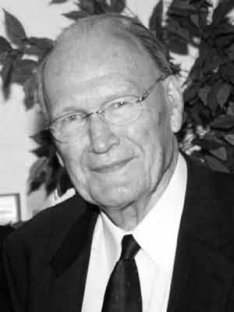Archive for January, 2009
Coming soon!
Friday, January 23rd, 2009The Constant of Change
Thursday, January 1st, 2009
In the fall of 1952, I was lying in a four-patient hospital room in northern British Columbia, Canada, with a split femur turning the pages of Christian Life Magazine when a quarter-page ad caught my attention. “You Can Write” it boldly proclaimed, inviting me to sign up for seven lessons in “The Beginning Christian Writer Course.” I decided I could afford the $15 cost and signed up, completing the course the next summer. Ten years later at Christian Life Publications, my desk sat next to the person who had served as my instructor in that course. Then many years after that, in 2001, Jerry Jenkins asked me to write new non-fiction lessons for his recently acquired Christian Writers Guild Apprentice Course.
Book-ended between that first correspondence course in learning to write a news article and now teaching others how to write non-fiction books are 45 years of journalistic experience during the most incredible changes in publishing technology imaginable.
Back in 1955 I had to deliver my denominational weekly’s copy to hot metal typesetters where one correction meant re-setting a whole line (see the illustration in the IdeaCast video on the front page—this reflects technology still in use 25 years later). During the laying out of the pages, I stood at the composing table telling a German-speaking compositor which typeface and size of letters to extract with tweezers from his tray and use to set a headline. Seven years later, I would dash onto Wacker Drive in Chicago to an early electronic typesetter to collect headlines on strips. Those strips were then pasted onto boards with articles and pictures to be photographed for plate-making. In Winnipeg, Canada, not many years later, I would sit by the hour at the color separator to make sure the colors came out right for our business magazine.
I was at Moody Press in the early 1970s when a reluctant production manager agreed to test computer typesetting (typesetters were striking because they did not want to learn how to work as computer typesetters). The first book electronically typeset at Moody, A Thief in the Night, had up to 30 typos per page—all electronically introduced after the final proofs had been meticulously proofread. Sure, it was tough at first; we had to figure out how to make this work with fewer errors. We did another proofread and another printing of that book.
About two years later, V. Gilbert Beers and I convinced the executive team to publish six full-color hardcover books for preteens written by Dr. Beers. Because the production manager had no experience with full-color printing, I became the go-to guy for the Donnelly Printers rep—and my willingness to accept change back in my color separator days in Winnipeg paid off with this new initiative at Moody. And this succeeded bigtime when Southwestern, the door to door sales folk, took that package of six books. We made back many times the cost of the investment.
Changes in publishing were happening fast and publishers had to keep up. As president of Here’s Life Publishers in 1987, I approved Wayne Hastings putting computers on every desk and acquiring word processing software that enabled the editors to not only edit online but also to format the pages. That was a potentially risky move because most publishers were not using desktop word processing because they had too much invested in the earlier generation of massive computers running typesetting equipment. But with that software, pages could be sent from computer to laser printer and finished pages then mailed off to printers. By 1993 when I landed at Scripture Press, five art designers sat at Macs to lay out full-color curriculum—and memory devices carried those pages to the printer.
Now the laptop I can carry with me on my travels has far more memory than all of those Macs combined. I can send complete books as one e-mail attachment to a printer. And a reader can carry that book on Kindle and read it wherever he or she pleases.
For the last five decades, it seems that change has been the only constant in publishing. And there’s no reason to think that the future will be any different.
What’s the next wave? Books you read for a fee on the Internet or books that will flow from a computer to a “book” like Kindle, into a Blackberry, or appear in DVD form with all kinds of entertaining illustrations now considered too costly to print in a bound book. While I don’t believe that books will ever go away, those publishers who don’t react quickly to the new technologies will soon be considered dinosaurs.
Our typewriters are gone, along with the compositor with the tweezers and blocks of letters—and we wouldn’t have it any other way. And while the industry causes us to change our formats, our applications, and our marketing methods, our message is the same. We are responsible to keep up with the trends and use the new methods at our disposal to continue making that message available to the next generation.
Les Stobbe is a writer, literary agent, editor in chief of the Jerry B. Jenkins Christian Writers Guild, and Director of International Christian Writers.

 Livingstone on Twitter
Livingstone on Twitter Livingstone on Facebook
Livingstone on Facebook